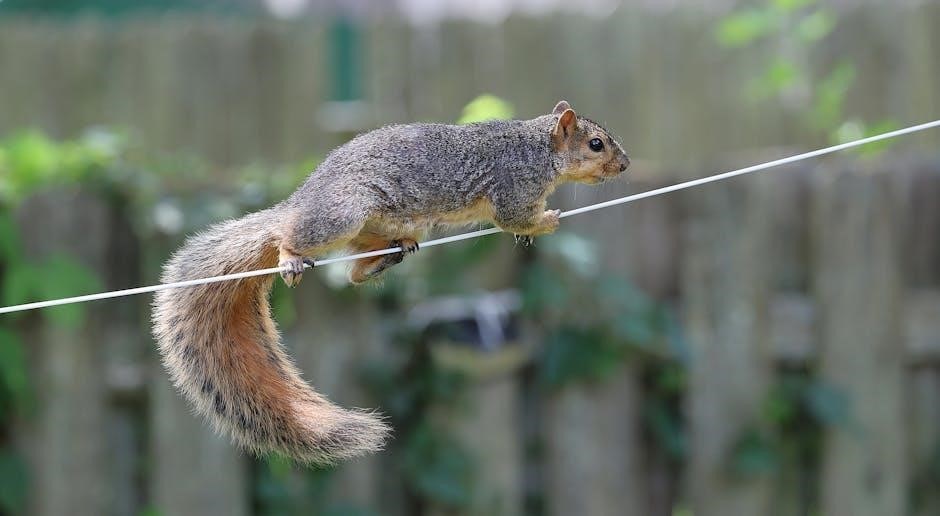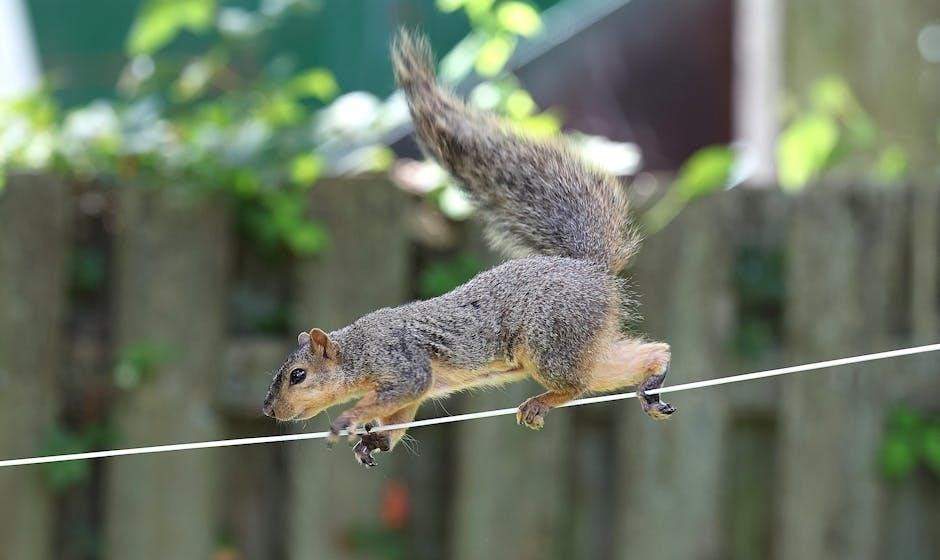Understanding MIG Welding and Wire Size Importance
MIG welding uses a continuous wire electrode, making wire size crucial for heat input and penetration. Selecting the right gauge ensures proper fusion and avoids defects.
MIG (Metal Inert Gas) welding, also known as GMAW (Gas Metal Arc Welding), is a widely used arc welding process that employs a continuous wire electrode. The wire feeds automatically through a welding gun, creating an electric arc that melts the wire and joins the base metals. This method is known for its speed, versatility, and clean results, making it ideal for various industries, including automotive, construction, and manufacturing. MIG welding is particularly effective for thin materials and allows for welding in multiple positions, making it a popular choice for both professionals and hobbyists. Proper equipment setup and technique are essential for achieving high-quality welds.
Why Wire Size Matters in MIG Welding
Wire size significantly impacts MIG welding performance. Thicker wires carry more current, generating higher heat for deeper penetration, while thinner wires offer better control and precision. The wrong size can lead to poor fusion or excessive heat, affecting weld quality. Proper wire diameter ensures optimal arc stability, avoiding defects like porosity or lack of fusion. Matching wire size to base metal thickness and desired penetration ensures strong, durable joints. Incorrect wire size compromises weld integrity, making it crucial to select the appropriate gauge for specific applications and materials to achieve consistent, high-quality results in MIG welding processes.
Types of MIG Wires
MIG wires vary in composition and application, with options like ER70S-6 for general steel welding, ER80S-D2 for high-strength applications, and flux-cored wires for added protection and versatility.
ER70S-6 Wire
ER70S-6 wire is a popular MIG welding wire designed for general-purpose welding of steel. It offers excellent mechanical properties, including high tensile strength and good impact resistance. Ideal for welding low-carbon steel, this wire is versatile and works well in various thicknesses. Its smooth arc characteristics and consistent feeding make it a favorite among welders. ER70S-6 is suitable for both thin and thick materials, providing strong, durable welds. It’s widely used in automotive, construction, and fabrication industries due to its reliability and performance across different welding conditions. Proper shielding gas, like 75/25 Argon/CO2, enhances its welding capabilities.
ER80S-D2 Wire
ER80S-D2 wire is a high-strength MIG welding wire designed for welding medium to heavy thickness steel. It offers superior tensile strength and excellent notch toughness, making it ideal for demanding applications. Commonly used in construction, heavy machinery, and structural welding, this wire ensures strong, durable joints. ER80S-D2 requires specific welding procedures to achieve optimal results, often needing preheating in thicker materials. It’s compatible with CO2 or high Argon mix shielding gases, ensuring proper penetration and weld quality. This wire is preferred for its reliability in high-stress environments and ability to meet stringent mechanical property requirements.
Solid vs. Flux-Cored Wires
Solid and flux-cored wires differ significantly in composition and application. Solid wires are uniform and weld cleanly, ideal for thin materials and precision work. Flux-cored wires have a tubular structure filled with flux, improving penetration and reducing porosity. They are better for thicker materials and high-strength applications. Flux-cored wires produce slag, requiring post-weld cleaning, while solid wires offer a cleaner finish. Shielding gas requirements also vary; solid wires typically use Argon or Argon-CO2 mixes, whereas flux-cored wires can use CO2 or higher CO2 blends. Understanding these differences helps choose the right wire for specific welding tasks and ensures optimal results. Proper selection impacts weld strength, appearance, and efficiency.

Factors Influencing Wire Size Selection
Wire size depends on power source, voltage, base metal thickness, joint design, welding position, gas composition, and desired penetration. Proper selection ensures quality and efficiency in MIG welding processes.

Power Source and Voltage
Power source and voltage significantly influence MIG welding performance. DC power sources are commonly used for their stable arc, while AC is preferred for non-ferrous metals. Voltage settings control the arc’s intensity, impacting penetration and weld pool size. Higher voltage increases heat input but may lead to excessive spatter. The wire feed speed must be synchronized with voltage to maintain a consistent arc. Proper balancing of these parameters ensures optimal weld quality, avoiding defects like lack of fusion or porosity. Adjusting voltage and wire feed speed together is essential for achieving the desired weld penetration and appearance in various materials and thicknesses.
Base Metal Thickness
Base metal thickness directly impacts wire size selection in MIG welding. Thicker materials require larger diameter wires to achieve sufficient penetration, while thinner materials need smaller wires to prevent burn-through. Common wire sizes range from 0.030″ to 0.045″, with 0.035″ being a versatile choice for many applications. For example, 0.030″ wire is ideal for 1/8″ steel, while 0.045″ is better suited for 1/4″ or thicker materials. Using the wrong wire size can lead to lack of fusion or excessive distortion. Matching the wire diameter to the base metal ensures proper penetration and avoids defects, making it a critical factor in achieving high-quality welds.

Joint Design and Penetration Requirements
Joint design and penetration requirements significantly influence MIG wire size selection. Different joints, such as butt, lap, or T-joints, demand varying levels of penetration. For instance, butt joints often require deeper penetration to ensure strength, necessitating a larger wire diameter. Lap joints may prioritize surface coverage over depth, allowing for a smaller wire. The desired weld penetration depth must match the wire’s capabilities to prevent lack of fusion or excessive melt-through. Proper alignment of wire size with joint design ensures structural integrity and meets specific project standards, optimizing both appearance and performance in the final product.
Welding Position
Welding position significantly impacts wire size selection. Flat, horizontal, vertical, and overhead welding each present unique challenges. Vertical welding may require a smaller wire to control the weld pool, while overhead welding demands precise control to prevent sagging. The position affects heat distribution, penetration, and weld pool behavior. A larger wire might be suitable for flat positions to achieve higher deposition rates, but smaller wires are preferred in vertical or overhead scenarios to maintain control. Adjusting wire size based on welding position ensures consistent fusion, prevents defects, and achieves optimal weld quality across various orientations and applications.
Shielding Gas Composition
Shielding gas composition plays a vital role in MIG welding, influencing wire size selection. The type and mixture of gases affect arc stability, penetration, and weld quality. For example, argon-rich blends are common for steel, while helium additions increase penetration. The gas’s ionization properties and flow rate impact the wire’s electrical resistance and melting rate. Proper shielding gas composition ensures a stable arc, prevents atmospheric contamination, and optimizes wire feed performance. Selecting the right gas mixture for the specific wire size and material enhances weld consistency and reduces defects, making it a critical factor in achieving desired results. Always follow recommended gas guidelines for optimal welding outcomes.
Desired Weld Penetration and Appearance
Desired weld penetration and appearance are critical factors in selecting the appropriate MIG wire size. Penetration depth ensures structural integrity, while appearance reflects weld quality. Thicker wires typically achieve greater penetration but may compromise surface smoothness. Conversely, thinner wires produce cleaner, more aesthetic welds but with less depth. Achieving the right balance requires understanding the material thickness and the intended application. Proper wire size ensures the weld meets both functional and visual standards, avoiding defects like lack of fusion or excessive spatter. Always consider the desired outcomes when choosing wire size to optimize both strength and visual appeal in the final weld. Consistency is key.

MIG Wire Specifications and Classification
MIG wires are classified by standards like AWS, specifying tensile strength, shielding gas, and intended use. Proper classification ensures compatibility with base metals and welding conditions.
Understanding AWS Wire Classification
AWS wire classification provides a standardized system for identifying MIG wire properties. Codes like ER70S-6 indicate tensile strength, shielding gas compatibility, and intended use. This ensures proper wire selection for specific metals and welding conditions, optimizing weld quality and consistency. The classification also specifies chemical composition, helping maintain mechanical properties. Understanding AWS standards is essential for selecting the right wire, ensuring reliable results in various welding applications. This system aids welders in achieving desired strength, ductility, and corrosion resistance, making it a cornerstone of MIG welding best practices.
How to Read MIG Wire Labels
Reading MIG wire labels involves understanding the coding system. The label typically includes the wire type, size, classification, and manufacturer. Codes like ER70S-6 indicate the wire’s tensile strength, shielding gas compatibility, and intended use. The first part, ER, denotes a solid wire for GMAW. The numbers and letters following specify mechanical properties and applications. This information ensures proper wire selection for specific metals and welding conditions, optimizing weld quality and consistency. Accurate label interpretation is critical for achieving desired results in MIG welding processes, ensuring compliance with project requirements and standards.

MIG Welder Setup and Configuration
Proper setup involves adjusting voltage, wire feed speed, and polarity. Configuration ensures optimal welding performance, consistent arc stability, and desired weld penetration for various materials and thicknesses.
Setting the Correct Voltage
Setting the correct voltage in MIG welding is crucial for achieving consistent arc stability and proper weld penetration. Voltage directly impacts the heat input, which affects the weld pool size and shape. Incorrect voltage can lead to lack of fusion, porosity, or excessive spatter. Always refer to the manufacturer’s guidelines for recommended voltage settings based on wire size and material thickness. Adjustments may be needed for different joint designs or welding positions. Proper voltage setup ensures a clean, controlled arc, which is essential for high-quality welds and optimal equipment performance. Testing and fine-tuning voltage settings is often necessary.
Adjusting Wire Feed Speed
Adjusting the wire feed speed is essential for maintaining a stable arc and consistent weld quality. The speed determines how much wire is fed into the arc, affecting penetration and bead appearance. Too slow a speed can result in a lack of fusion, while too fast may cause excessive spatter. Proper wire feed speed depends on wire diameter, material thickness, and desired weld penetration. Refer to the welder’s specifications and material guidelines to set the appropriate speed. Fine-tuning during welding ensures optimal results, preventing defects and improving efficiency. Regular monitoring and adjustments are key to achieving professional-grade welds.
Configuring Polarity Settings
Configuring polarity settings is crucial for achieving proper arc characteristics in MIG welding. The correct polarity ensures efficient energy transfer, impacting both weld penetration and appearance. Most MIG welders operate in DC (Direct Current) mode, with the electrode positive (DCEP) polarity, which promotes deep penetration and smooth transfer. However, some applications may require alternating current (AC) for specific materials like aluminum. Always consult the welder’s manual and material guidelines to set the correct polarity. Incorrect settings can lead to poor weld quality, lack of fusion, or excessive spatter, emphasizing the importance of proper configuration for optimal results. Regular checks ensure consistency and reliability in welding operations.

Safety Considerations
Ensure proper equipment setup, avoid overloaded circuits, and maintain regular inspections to prevent hazards. Always follow grounding procedures to safeguard against electrical risks during MIG welding operations.
Personal Protective Equipment (PPE)
Wearing proper PPE is essential for MIG welding safety. A welding helmet with a shaded lens protects eyes from UV/IR radiation. Heat-resistant gloves prevent burns, while safety glasses provide additional eye protection. Fire-resistant clothing and steel-toe boots safeguard against sparks and falling objects. Ensuring all PPE is worn correctly minimizes risks of injury. Neglecting PPE can lead to severe burns, eye damage, or other harm. Always inspect PPE for damage before use to maintain its protective effectiveness during welding operations.
Proper Ventilation Practices
Proper ventilation is critical in MIG welding to remove harmful fumes and particles. Welding generates ozone, metal vapors, and other airborne contaminants that can pose health risks. Always weld in a well-ventilated area or use a local exhaust system to extract fumes; Natural ventilation, while less reliable, can supplement mechanical systems. Avoid breathing fumes directly, as they may cause respiratory issues. Ensuring good airflow prevents the accumulation of hazardous gases, creating a safer working environment. Regularly inspect ventilation systems to maintain their efficiency and effectiveness during welding operations.
Fire Safety Precautions
Fire safety is essential in MIG welding due to sparks and heat generated. Keep flammable materials, such as fabrics or chemicals, away from the welding area. Ensure a fire extinguisher is nearby and easily accessible. Regularly inspect the workspace for potential fire hazards, such as frayed cables or improperly stored welding supplies. Never leave hot metal or sparks unattended. Properly store welding equipment and materials to minimize fire risks. Always follow safety protocols to prevent accidents and maintain a safe working environment during welding operations.

Optimizing Weld Quality
Optimizing weld quality involves proper wire size selection, consistent wire feed speed, and accurate voltage settings. These factors ensure adequate penetration, clean appearance, and strong, durable welds.
Maintaining Consistent Wire Feed
Maintaining Consistent Wire Feed
Maintaining a consistent wire feed is essential for stable arc production and uniform weld quality. Proper tension on the spool ensures smooth wire flow without tangling or slipping. Regularly cleaning the wire feeder and rollers prevents debris buildup, which can cause erratic feeding. Adjusting the drive system to suit the wire diameter and type further enhances consistency. A steady wire feed directly impacts penetration depth and weld appearance, making it a critical factor in achieving professional-grade MIG welds. Always monitor and adjust settings as needed to maintain optimal performance.
Ensuring Proper Arc Stability

Proper arc stability is critical for consistent weld quality in MIG welding. Achieving this requires precise control over voltage, wire feed speed, and shielding gas composition. A stable arc produces a smooth, consistent transfer of molten wire to the base metal, minimizing spatter and ensuring even penetration. Adjusting the wire feed speed and voltage to match the wire diameter and material thickness is essential. Using the correct shielding gas for the specific material further enhances arc stability. Regular maintenance of the welding gun and nozzle also prevents irregularities in the arc. Consistent arc stability leads to professional-grade welds with optimal appearance and strength.
Monitoring and Adjusting Weld Appearance
Monitoring weld appearance ensures high-quality results in MIG welding. Consistent bead width, uniform penetration, and minimal spatter indicate optimal settings. Adjustments to voltage, wire feed speed, and travel speed can refine the weld’s visual and structural integrity. Proper shielding gas flow prevents porosity and oxidation, contributing to a cleaner finish. Regularly inspecting the welds helps identify issues early, allowing for timely corrections. Achieving the desired weld appearance not only enhances aesthetics but also ensures the structural soundness of the joint, making it a critical step in the MIG welding process.
Material-Specific Welding Guidelines
Material-specific guidelines ensure proper wire selection for steel, stainless steel, and aluminum, optimizing weld strength and durability by matching wire type and size to base metal requirements.
Welding Steel with MIG
For welding steel, MIG welding is highly effective, offering strong, clean joints. Common wire choices include ER70S-6 and ER80S-D2, designed for varying strength requirements. Wire diameter selection depends on steel thickness, with 0.030” or 0.035” wires being typical for general applications. Proper shielding gas, often a mix of argon and CO2, ensures minimal porosity. Voltage and wire feed speed must align with material thickness to avoid lack of fusion or burn-through. Maintaining consistent travel speed and joint preparation, such as clean, grease-free surfaces, is critical for optimal results. Techniques like push or pull welding can be adapted based on joint design and desired penetration.
Welding Stainless Steel
Welding stainless steel requires specific techniques to maintain corrosion resistance and strength. Typically, a 0.030” or 0.035” diameter wire, such as ER308L or ER316L, is used to match the base metal’s composition. High argon content shielding gas is essential to prevent contamination and porosity. Voltage and wire feed speed must be adjusted for the thickness of the stainless steel to avoid excessive heat input, which can lead to warping or discoloration. Proper joint preparation, including grinding to remove oxides, is crucial. Post-weld cleaning with a stainless steel brush and pickling paste helps restore the material’s corrosion-resistant properties and finish.
Welding Aluminum
Welding aluminum with MIG requires careful selection of wire size and type to ensure proper fusion and avoid porosity. Typically, a 0.030” or 0.035” diameter aluminum-specific wire, such as ER5356 or ER4043, is used. Shielding gas should be a high-purity argon/helium mix to prevent oxidation. Wire feed speed and voltage must be adjusted to match the aluminum thickness, as excessive heat can cause burn-through or warping. Cleanliness is critical; remove oxides with a stainless steel brush and clean with acetone before welding. Maintain consistent travel speed to achieve uniform penetration and appearance.
Troubleshooting Common Issues
Identify and address issues like poor arc stability, lack of penetration, or wire feed problems by adjusting settings, cleaning equipment, and ensuring proper wire size for the material.
Diagnosing Poor Arc Stability
Poor arc stability in MIG welding often stems from incorrect wire size or improper shielding gas composition. A wire too thin may not maintain consistent heat, leading to erratic arcs. Conversely, a wire too thick can overload the power source, causing unstable current flow. Additionally, insufficient or contaminated shielding gas fails to protect the arc, disrupting its consistency. Checking wire feed speed settings and ensuring proper gas flow can help identify the root cause. Regular maintenance of the welding gun and nozzle also plays a crucial role in preventing such issues. Addressing these factors ensures a steady, reliable arc during welding processes.
Addressing Lack of Penetration
Lack of penetration in MIG welding is often due to insufficient heat input, which can result from using too small a wire diameter or incorrect voltage settings. Increasing the wire size or adjusting the power source to deliver higher voltage can resolve this issue. Additionally, improper shielding gas composition or low wire feed speed may contribute to poor penetration. Ensuring adequate gas coverage and maintaining the correct feed rate helps achieve deeper weld penetration. Regularly inspecting the welding gun and nozzle for blockages is also essential to sustain consistent arc performance and prevent penetration issues during the welding process.
Solving Wire Feed Problems
Wire feed issues in MIG welding often stem from improper wire size selection or tangled wire spools. Regularly inspecting the wire for tangles or damage is crucial. Ensuring the wire feed speed matches the wire diameter and material type prevents uneven feeding. Cleaning the welding gun and nozzle from debris can also resolve feed problems. Additionally, verifying the correct polarity settings and ensuring the wire is properly seated in the feeder helps maintain smooth operation. Addressing these factors promptly ensures consistent wire feed, reducing the risk of weld defects and improving overall welding efficiency and quality.
Best Practices for MIG Welding
Always use the correct shielding gas for the material, maintain consistent wire feed speed, and clean the welding gun regularly for optimal performance and weld quality.

Using the Correct Shielding Gas
Shielding gas protects the weld area from contamination and influences weld quality. For steel, 75% argon and 25% CO2 is common. Stainless steel often uses 90% helium and 10% argon. Aluminum requires 100% argon. Using the wrong gas can lead to porosity or lack of penetration. Always ensure the gas matches the wire type and material being welded. Proper gas selection enhances arc stability and prevents atmospheric interference, resulting in cleaner, stronger welds. Regularly check gas flow rates and ensure the tank is full to maintain consistent shielding throughout the welding process.
Maintaining the MIG Welder
Regular maintenance is crucial for optimal MIG welder performance. Clean the welding gun, nozzle, and contact tips frequently to prevent debris buildup. Inspect and replace worn-out parts like liners and drive rolls. Ensure the wire feed system is free from tangles and properly aligned. Check the power source and cables for damage or wear. Refer to the user manual for specific maintenance schedules and guidelines. Proper upkeep extends the lifespan of the welder and ensures consistent, high-quality welds. Neglecting maintenance can lead to poor wire feeding, erratic arcs, and reduced weld quality over time.
Cleaning the Welding Gun and Nozzle
Clean the MIG welding gun and nozzle regularly to ensure smooth wire feeding and consistent arc performance. Use compressed air or a soft-bristle brush to remove spatter and debris. Avoid using harsh chemicals, as they may damage components. Inspect the contact tip for wear or buildup and replace it if necessary. A clean nozzle improves gas flow, reducing porosity and ensuring better shielding. Regular cleaning also prevents wire feeding issues and maintains weld quality. Always refer to the manufacturer’s guidelines for specific cleaning recommendations tailored to your equipment.
Advanced Techniques and Tips
Experiment with wire feed speeds and voltage settings for optimal results. Use pulse MIG for thinner materials to minimize heat input. Always maintain consistent techniques for uniform weld quality.
Push vs. Pull Welding Techniques
Push welding involves moving the MIG gun away from the weld pool, reducing spatter and improving visibility. Pull welding moves the gun toward the pool, enhancing penetration. Push is ideal for thin materials and clean finishes, while pull suits thicker materials and deeper penetration needs. Techniques vary by material thickness and desired weld quality. Wire size and shielding gas also influence the choice. Proper technique selection ensures optimal results, balancing aesthetics and structural integrity in MIG welding applications.
Using Different Shielding Gases for Various Materials
Shielding gases protect the weld from contamination and influence weld properties. For steel, 75% Argon + 25% CO2 is common, while 100% CO2 is cost-effective for thicker steels. Stainless steel often uses 90% Helium + 7.5% Argon + 2.5% CO2 for optimal penetration and minimal porosity. Aluminum requires 100% Argon or Argon-Helium mixes to prevent oxidation. The choice of gas affects weld appearance, penetration, and mechanical properties, ensuring compatibility with the base metal and wire type. Proper gas selection enhances weld quality and prevents defects in various MIG welding applications.
Optimizing Welding Speed and Technique
Adjusting welding speed and technique is vital for consistent results. A steady, controlled motion ensures even heat distribution and penetration. Slower speeds allow deeper penetration, while faster speeds reduce distortion. Proper torch angle and height maintenance prevents lack of fusion. Using a push technique for thinner materials and pull technique for thicker materials enhances weld quality. Maintaining a consistent wire feed speed and voltage supports stable arc characteristics. Practicing these techniques improves weld appearance and structural integrity, making them essential for achieving professional-grade MIG welds across various materials and applications.
Understanding wire size and proper techniques ensures high-quality MIG welds. Continuous learning and practice refine skills, making MIG welding efficient and reliable for various applications and materials.
Proper MIG wire size selection is vital for achieving strong, consistent welds. Understanding factors like base metal thickness, voltage, and welding position ensures optimal results. Maintaining correct polarity, voltage, and wire feed speed enhances weld quality. Safety measures, such as using PPE and ensuring proper ventilation, are essential. Regular equipment maintenance and cleaning prevent issues. Practicing techniques and staying informed about best practices leads to mastery. Continuous learning and adaptation to material-specific guidelines improve efficiency and precision in MIG welding applications.
Importance of Practice and Continuous Learning
Mastering MIG welding requires consistent practice to refine techniques and adapt to various materials. Regular hands-on experience improves weld quality and helps in understanding wire size impact. Continuous learning keeps welders updated on new technologies and best practices. Staying informed about advancements enhances efficiency and precision. Practice builds muscle memory, ensuring smooth operations. Seeking feedback and mentorship accelerates skill development. Embracing lifelong learning fosters adaptability, crucial for tackling diverse projects effectively. Dedication to practice and learning leads to exceptional results and professional growth in MIG welding, making it a cornerstone of achieving expertise.
